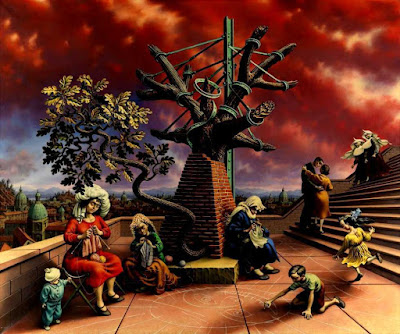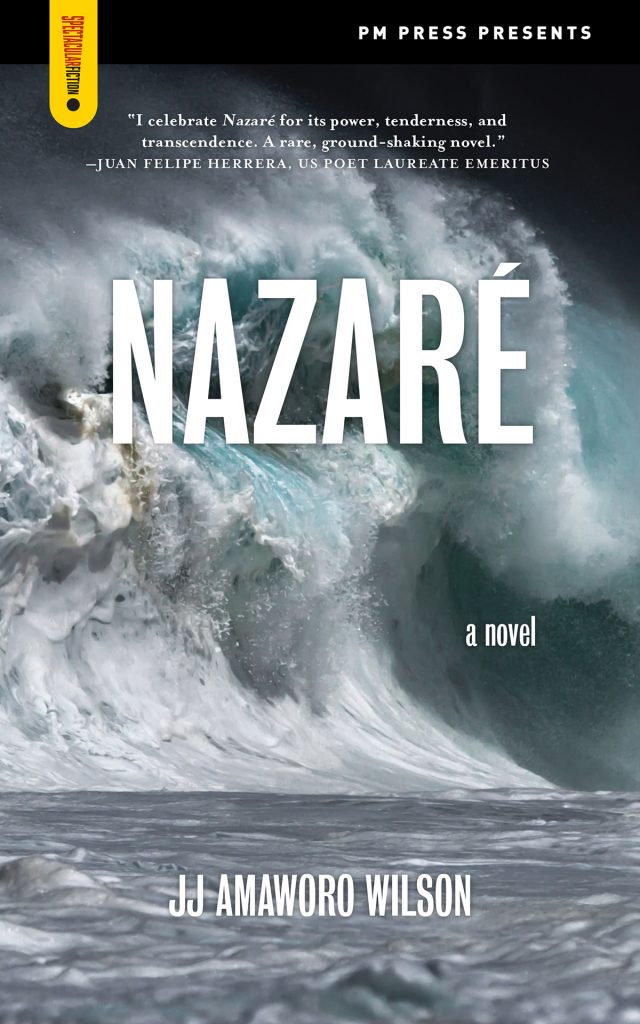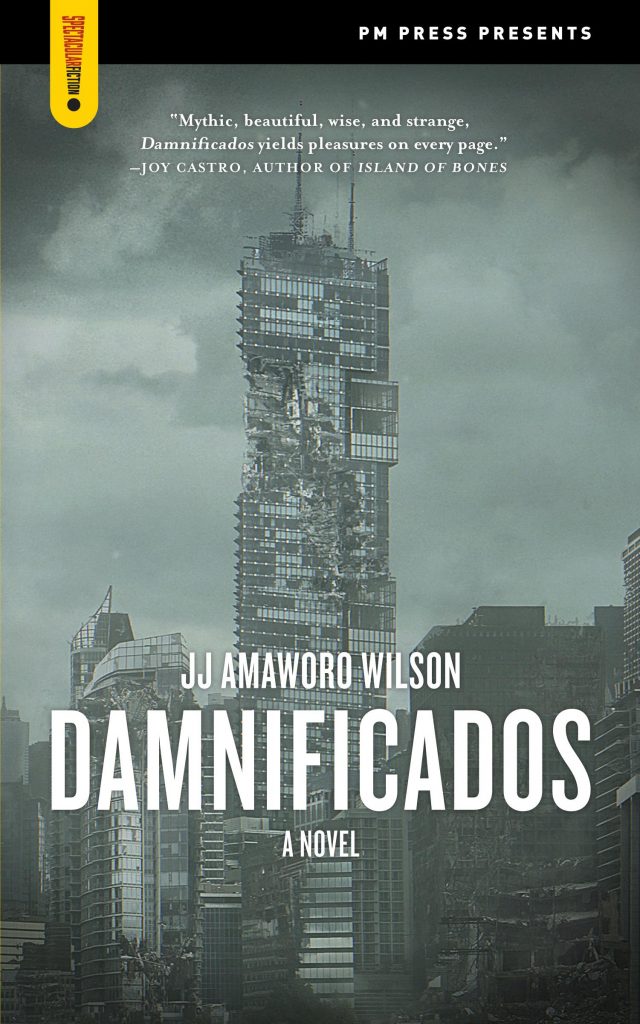Nazaré on the May Day Bookstore Blog
May Day Bookstore Blog
November 23rd, 2021
“Nazaré” by J.J. Amaworo Wilson, 2021
This is a novel about a magical realist revolution in the Village With No Name and a land called Balaal that is perhaps in South America, but is really the whole global south. An international stew of polyglot languages, peoples, words, places, animals and things reflect a desperate area angry at the bloody and repressive Matanza family – matanza meaning ‘slaughter’ in Spanish.
Words, Words
Word are important in this book. Nazaré is a city in Portugal known for the biggest surfing waves in the world. A large ocean wave named Nazaré saves the lead character, a boy named Kin, when he is trapped on a small island by thugs who are drowned. Kin should remind one of the phrase ‘kith and kin’ – perhaps a relative. One of the groups in Balaal is named the “Bouazizi” after the fruit vendor who set himself on fire in Tunisia to start the Arab Spring. Barbudos, meaning ‘bearded revolutionaries,’ live in African-style circular huts called rondavels, similar to yurts or hogans.
The dictator’s full name is Porfirio Fulgencio Melgarejo Trujillo Matanza, which brings up Porfirio Diaz, the former dictator of Mexico before the Mexican revolution; Fulgencio Batista, the former dictator of Cuba before Castro and Che; Mariano Melgarejo, a former dictator of Bolivia who was also overthrown; Rafael Trujillo, the bloody dictator of the Dominican Republic who died by assassination. The thugs employed by Matanza are the Tonto Macoute – an obvious reference to the Tonton Macoutes – a death squad associated with the dictator Jean Claude Duvalier of Haiti.
Bible Boy
Biblical hints abound as well. Balaal should remind us of Baal – a top Canaanite deity in the Bible, a word that also means lord or owner. One of the honest fishermen is named Shadrak – harking back to Shadrach, a friend of Daniel’s who survived an inferno. Nazaré even hints at the town of Nazareth. An ancient turtle is named Abacaxi, a Brazilian pineapple but perhaps also riffing off the word ‘abraxas’ –a Gnostic mystical word. Kin goes to the desert and lives in a cave called Zugarramurdi, which is really a place where occult witch trials once took place in Spain. He starves for 10 days in the cave, similar to many occasions in Biblical lore or Hindu practice.
Kin is not religious, nor are his allies, but muezzin call from towers in Balaal and 3 pigeons are christened ‘The Magi.’ A ‘water walker’ lives in the village. The gold mine is called Bocadelin – the ‘mouth of hell.’ 3 wise men bring gifts to Kin. Like Lord of the Rings’ Ents and eagles, nature is also on his side – mostly. The boy will lead the revolution with the barbudos, the bearded revolutionaries, and perhaps at some point with more help from Nazaré. Biblical references usually attempt to give a book gravitas – such is the method of authors like Cormac McCarthy too.
The fishermen are Japanese, West Indian, Somali, Guyanese, Indonesian and Pacific Islanders. The female revolutionary Jesa (Jesus?) escapes the Tonto Macoute on a camel. The legal system is criminal and arbitrary. The rulers confiscate everything of value from the people. Prisons are filled. Homeless boys live on the beach in shipping containers accidentally dropped off of cargo ships.

To organize this anarchist revolution, Kin and Jesa recruit desperadoes from different groups: desert-dwelling revolutionaries strapped with bullet belts like Zapata; a criminal gang loaded with explosives led by the King of the Rats, Bashir; ‘travelers’ who bring with them knives and a tiger; a group of stoic monks skilled in swordplay; giant gold miners led by a man named Cienfuegos, the name of a leader in the Cuban revolution.
They are joined by a semi-armed and somewhat ridiculous procession of ragged civilians, atheistic nuns, suited knights and fishermen from the Village With No Name, another outcast village and Balaal. They have two ancient cannons, a fire-breathing metal dragon, a hot-air balloon and tear gas. There is also poison. Unlike the Bolsheviks or the 26th of July Movement, the groups converge on the central square in Balaal first of all. These semi-fantastical assemblages might remind one of the organizations and masses that would need to cohere in order to have a revolution in the U.S.
This book is a modern form of magical realism, but perhaps more coherent and focused. Magical realism was first developed by Gabriel Garcia Marquez, who used it for somewhat buried political purposes. Now it is usually used as a wing of the apolitical fantasy universe, given the neo-liberal and post-modernist grease on the slides of modern literature. Wilson, however, returns it to its origins.
Does Matanza’s army of 500 win? Are the Tonto Macoute defeated too? Does nature tip the balance – which rarely happens in the real world? Do they succeed in removing the curse of the international Matanza dictatorship? And if they win, what anarchist or magical democratic republic will replace Matanza? Will nature help or hinder? Will one thug revolutionary, like Bashir the basher, try to gain power for himself? You will have to read this delightful book…
Prior blog reviews on this subject, use search box, upper left, to investigate our 14 year archive, with these terms: “Damnificados” (Wilson); “Child of God,” “The Road,” “All the Pretty Horses” and “Suttree” (all 4 by McCarthy); “Famished Road” (Okri); “The Dream of the Celt” (Llosa); “Camino Real” (Williams); “The Open Veins of Latin America” (Galeano); “Building the Commune,” “The Diary of Che Guevara,” “Viva Zapata,”“An Anthology of the Writings of Jose Carlos Mariatequi.”
The Kultur Kommissar
November 23, 2021








